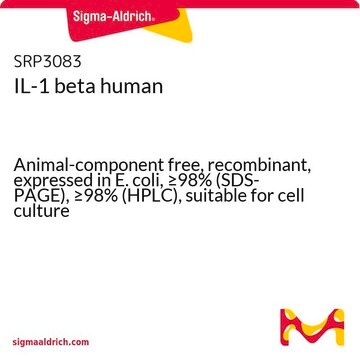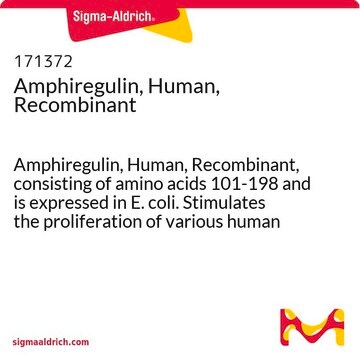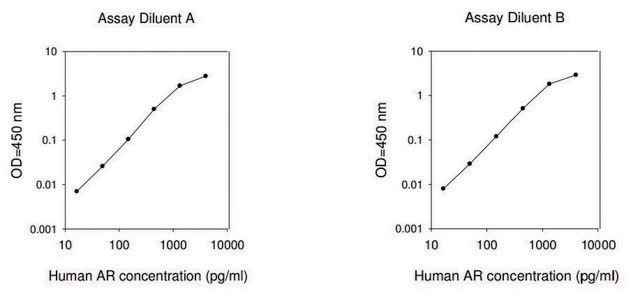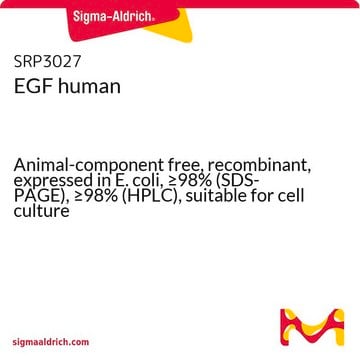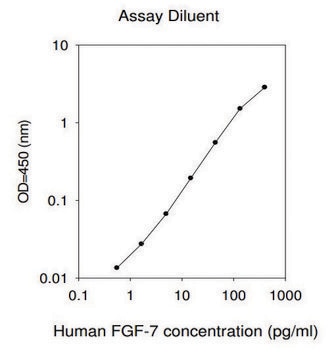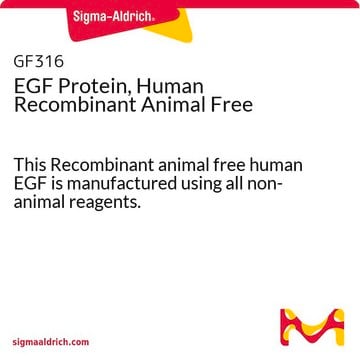SRP4969
Epigen (EPGN) human
recombinant, expressed in E. coli, ≥98% (SDS-PAGE)
Synonym(s):
ALGV3072, EPG, EPGN, Epigen, FLJ75542, PRO9904
Sign Into View Organizational & Contract Pricing
All Photos(1)
About This Item
UNSPSC Code:
12352202
NACRES:
NA.32
Recommended Products
biological source
human
recombinant
expressed in E. coli
assay
≥98% (SDS-PAGE)
form
lyophilized
potency
150-300 ng/mL
mol wt
~7.9 kDa
packaging
pkg of 25 μg
impurities
endotoxin, tested
NCBI accession no.
UniProt accession no.
shipped in
wet ice
storage temp.
−20°C
Gene Information
human ... EPGN(255324)
General description
The precursor EPGN (epigen) is a transmembrane glycoprotein and is widely expressed in human tissues. The precursor is cleaved to give a soluble EGF (epidermal growth factor)-like domain.
Recombinant Human epigen, produced in Escherichia coli is a single, non-glycosylated, polypeptide chain containing 72 amino acids and having a molecular mass of 7.9kDa.
Recombinant Human epigen, produced in Escherichia coli is a single, non-glycosylated, polypeptide chain containing 72 amino acids and having a molecular mass of 7.9kDa.
Biochem/physiol Actions
EPGN (epigen) is a ligand for EGFR (epidermal growth factor receptor). EPGN (epigen) belongs to the EGF family and enhances proliferation in keratinocytes.
Physical form
EPGN was lyophilized from 20 mM PBS buffer pH-7.4 containing 130 mM sodium chloride.
Reconstitution
Centrifuge the vial prior to opening. Avoid freeze-thaw cycles.
Reconstitute in sterile d-H2O not less than 100 μg/ml. For long term storage, it is recommended to add a carrier protein (0.1% HSA or BSA).
Certificates of Analysis (COA)
Search for Certificates of Analysis (COA) by entering the products Lot/Batch Number. Lot and Batch Numbers can be found on a product’s label following the words ‘Lot’ or ‘Batch’.
Already Own This Product?
Find documentation for the products that you have recently purchased in the Document Library.
Fetal inhibition of inflammation improves disease phenotypes in harlequin ichthyosis.
Cottle DL, et al.
Human Molecular Genetics, 24, 436-436 (2015)
Epigen, the last ligand of ErbB receptors, reveals intricate relationships between affinity and mitogenicity.
Kochupurakkal BS, et al.
The Journal of Biological Chemistry, 280, 8503-8503 (2005)
The EGFR-HER2 module: a stem cell approach to understanding a prime target and driver of solid tumors.
Schneider MR and Yarden Y
Oncogene, 35, 2949-2949 (2019)
Our team of scientists has experience in all areas of research including Life Science, Material Science, Chemical Synthesis, Chromatography, Analytical and many others.
Contact Technical Service
